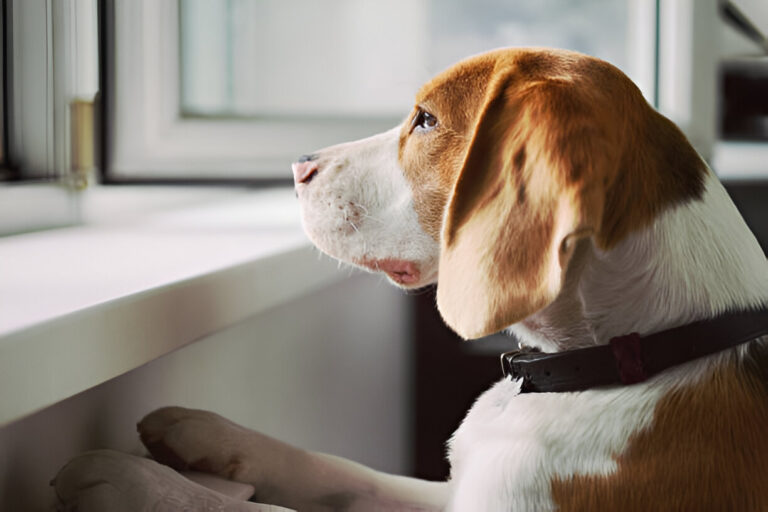What Is the Sense of Fear That Dogs Feel When Separated from Their Family?
When left alone, some dogs develop a separation anxiety disorder that makes them very anxious. If left untreated, it can result in destruction, fear, panic, and problems for your dog’s health.
Dogs have a natural tendency to live in groups. They befriend others and like doing things regularly. They may become agitated or fearful if they’re left by themselves, especially for quite some time.
Ways to Recognize Separation Anxiety in Your Dog
You should understand the warning signs to know when to take action. These are some signs that might indicate your dog is suffering from separation anxiety:
- Barking or howling very loudly when left alone.
- Chewing on furniture or doors destructively.
- Scratching to try and open doors or windows.
- Soiling the house even though the pet has been trained.
- Circling the floor instead of running straight.
- Frequent drooling or rapid breathing.
- Tries to get away and sometimes ends up hurt
These habits often appear as soon as the owner leaves and vanish when they come back.
What Is the Cause Behind Separation Anxiety in Dogs?
Several different elements may lead to separation anxiety in dogs.
- Regularity in Routine: Dogs stick to habit. Any sudden change in your daily plans (such as going back to work after a long break at home) can lead to anxiety.
- Rescue dogs and those who have been abandoned may be fearful due to a history of never being sure about their future.
- Fear-based habits might appear after undergoing a trauma or losing someone, including a pet.
- Lack of practice in being alone means your dog may have trouble handling situations where you are away.
What Steps Should I Take to Support a Dog with Separation Anxiety?
You should be patient and constant when helping your dog with separation anxiety. The following strategies are known to work:
1. Gradual Desensitization
First, leave your dog alone for a few minutes, and later extend the time gradually. When leaving or arriving, don’t behave in an obvious way to avoid making too much of a scene.
2. Provide a Relaxing and Safe Experience
Place their bed along with favorite toys and a t-shirt that has your scent in a comfortable spot. Getting in a safe and cheerful space often lowers the sense of isolation.
3. Right Toys
Puzzle feeder toys and chewable items will amuse and entertain your dog. You can help your anxious dog by giving them toys that purposefully challenge them, like a snuffle mat, or offer relief, such as a Bedtime Die.
4. Use Dog-Calming Products
Sprays that calm, vests that offer pressure, and diffusers with pheromones (like Adaptil) are all available options. Chamomile or CBD (with vet approval) are natural options as well.
5. Avoid Punishment
Do not reprimand your dog when it shows symptoms of anxiety. They truly do feel distressed, even if it looks like they are angry with you. Giving a punishment may lead to more harm.
Training Techniques That Work
1. Effective Methods for Training
If your dog is comfortable in the crate, it can become useful for your routine. Crating a dog with anxiety who fears the crate may only make them panic more. It should make you feel at home, not confined.
2. Study Short Departures.
Be back home quickly after spending 1-2 minutes away from the cat. Length of time in this stage depends on the dog’s improvement, and rewards should be given for calm behavior. It will make your dog calmer and more confident.
3. Promote Your Independence While You Live At Home
Make sure your dog is kept in another room during quiet or busy times. Expression appreciation when they do well with emotion regulation on their own. It allows them to get used to being by themselves.
4. Identifying Times When You Need Someone Else
- If home strategies for your dog’s anxiety are not helping, you should seek professional advice.
- Visit a vet and rule out physical problems before discussing medications for anxiety.
- They can offer specific plans, as well as help with desensitization and teaching your dog good behaviors.
- Ways to Avoid Separation Anxiety
You should take measures to prevent illness, even if your dog seems healthy at present.
- Make sure to take your puppy on short walks often.
- Players should be encouraged to play on their own.
- Try to follow a similar routine each day.
- Praise your dog for calm behavior when it is with you or alone.
- Help your dog meet other people and dogs to make them feel less anxious.
Final Thoughts
It’s true that experiencing dog separation anxiety is worrisome for both you and your pet, but you should know that it is something that can be treated. When you show your dog compassion, stick to routines, and use proper tools, they will feel loved and safe even when you’re away. Understand that your dog isn’t being naughty, they’re just coping in the way they know how.
Not sure where to go next? Let us guide you:
Interested in Dogs unusual behaviour? Read Why Is My Dog Whining So Much? Understanding the Causes and Solutions



1 Comment
Pingback: How to Socialize a Puppy: A Complete Guide for New Dog Owners - barkbuddies.blog